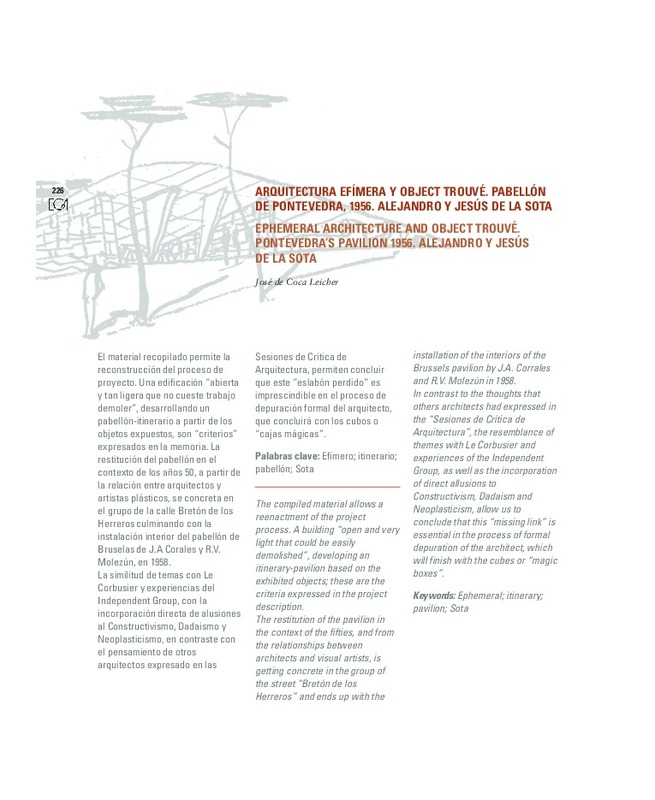JavaScript is disabled for your browser. Some features of this site may not work without it.
Buscar en RiuNet
Listar
Mi cuenta
Estadísticas
Ayuda RiuNet
Admin. UPV
ARQUITECTURA EFÍMERA Y OBJECT TROUVÉ. PABELLÓN DE PONTEVEDRA, 1956. ALEJANDRO Y JESÚS DE LA SOTA
Mostrar el registro completo del ítem
Coca Leicher, JD. (2012). ARQUITECTURA EFÍMERA Y OBJECT TROUVÉ. PABELLÓN DE PONTEVEDRA, 1956. ALEJANDRO Y JESÚS DE LA SOTA. EGA. Revista de Expresión Gráfica Arquitectónica. 17(20):226-235. https://doi.org/10.4995/ega.2012.1444
Por favor, use este identificador para citar o enlazar este ítem: http://hdl.handle.net/10251/22703
Ficheros en el ítem
Metadatos del ítem
| Título: | ARQUITECTURA EFÍMERA Y OBJECT TROUVÉ. PABELLÓN DE PONTEVEDRA, 1956. ALEJANDRO Y JESÚS DE LA SOTA | |
| Otro titulo: |
|
|
| Autor: | Coca Leicher, José de | |
| Fecha difusión: |
|
|
| Resumen: |
[EN] The compiled material allows a reenactment of the project process. A building "open and very light that could be easily demolished", developing an itinerary-pavilion based on the exhibited objects; these are the ...[+]
[ES] El material recopilado permite la reconstrucción del proceso de proyecto. Una edificación "abierta y tan ligera que no cueste trabajo demoler", desarrollando un pabellón-itinerario a partir de los objetos expuestos, ...[+]
|
|
| Palabras clave: |
|
|
| Derechos de uso: | Reserva de todos los derechos | |
| Fuente: |
|
|
| DOI: |
|
|
| Editorial: |
|
|
| Versión del editor: | https://doi.org/10.4995/ega.2012.1444 | |
| Tipo: |
|








